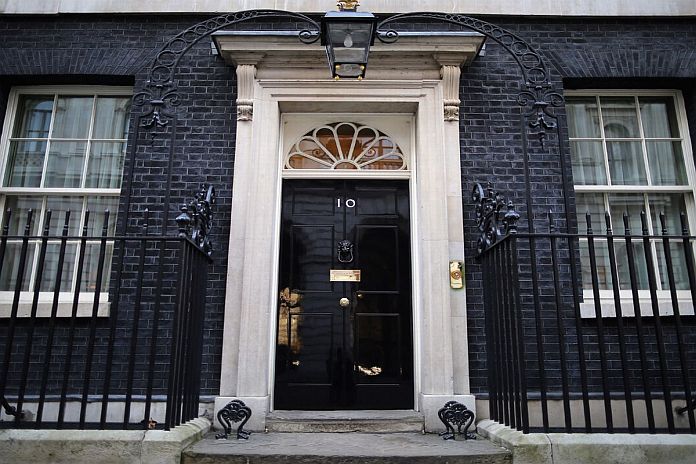By Caribbean News Global ![]()
LONDON, England – Prime minister Boris Johnson, in a statement to parliament on Monday, announced the government’s roadmap to cautiously ease lockdown restrictions in England.
The roadmap, which has now been published on gov.uk, outlines four steps for easing restrictions. Before proceeding to the next step, the government will examine the data to assess the impact of previous steps.
This assessment will be based on four tests:
- The vaccine deployment programme continues successfully;
- Evidence shows vaccines are sufficiently effective in reducing hospitalisations and deaths in those vaccinated;
- Infection rates do not risk a surge in hospitalisations which would put unsustainable pressure on the National Health Service (NHS);
- Our assessment of the risks is not fundamentally changed by new variants of concern.
There will be a minimum of five weeks between each step: four weeks for the data to reflect changes in restrictions; followed by seven days’ notice of the restrictions to be eased.
The chief medical officer and the chief scientific adviser have made clear that this will give adequate time to assess the impact of each step and reduce the risk of having to re-impose restrictions at a later date.
The prime minister said: “Getting children back into school has been the top priority, and so from March 8 all children and students will return to face to face education in schools and college. By this point, everyone in the top four vaccine priority cohorts – as determined by the independent JCVI – will have received the first dose of their vaccine and developed the necessary protection from it.”
Also from this date:
- Wraparound childcare and other supervised children’s activities can resume where they enable parents to work, seek work, attend education, seek medical care or attend a support group;
- Care home residents will be allowed one regular visitor provided they are tested and wear PPE;
- The Stay at Home requirement will remain, but people can leave home for recreation outdoors such as a coffee or picnic with their household or support bubble, or with one person outside their household;
- Some university students on practical courses will be able to return to face to face learning.
As part of step one, there will be further limited changes from March 29, the week in which most schools will break up for Easter. Outdoor gatherings of either 6 people or 2 households will be allowed, providing greater flexibility for families to see each other. This includes in private gardens.
Outdoor sports facilities, such as tennis and basketball courts, will be allowed to reopen, and people can take part in formally organised outdoor sports. At this point, the Stay at Home order will end, although many lockdown restrictions will remain.
For example, you should continue to work from home where possible, and overseas travel remains banned, aside for a small number of reasons.
The subsequent steps are set out as follows:
Step 2, no earlier than April 12:
- Non-essential retail, personal care premises, such as hairdressers and nail salons, and public buildings, such as libraries and community centres, will reopen;
- Most outdoor attractions and settings, including zoos, and theme parks, will also reopen although wider social contact rules will apply in these settings to prevent indoor mixing between different households. Drive-in cinemas and drive-in performances will also be permitted;
- Indoor leisure facilities, such as gyms and swimming pools, will also reopen – but only for use by people on their own or with their household;
- Hospitality venues can serve people outdoors only. There will be no need for customers to order a substantial meal with alcohol, and no curfew – although customers must order, eat and drink while seated;
- Self-contained accommodation, such as holiday lets, where indoor facilities are not shared with other households, can also reopen;
- Funerals can continue with up to 30 people, and the numbers able to attend weddings, receptions and commemorative events such as wakes will rise to 15 (from 6).
Step 3, no earlier than May 17:
- Outdoors, most social contact rules will be lifted – although gatherings of over 30 people will remain illegal;
- Outdoor performances such as outdoor cinemas, outdoor theatres and outdoor cinemas can reopen… Indoors, the rule of 6 or 2 households will apply – although we will keep under review whether it is safe to increase this;
- Indoor hospitality, entertainment venues such as cinemas and soft play areas, the rest of the accommodation sector, and indoor adult group sports and exercise classes will also reopen;
- Larger performances and sporting events in indoor venues with a capacity of 1,000 people or half-full (whichever is lower) will also be allowed, as will those in outdoor venues with a capacity of 4,000 people or half-full (whichever is lower);
- In the largest outdoor seated venues where crowds can spread out, up to 10,000 people will be able to attend (or a quarter-full, whichever is lower);
- Up to 30 people will be able to attend weddings, receptions and wakes, as well as funerals. Other life events that will be permitted include bar mitzvahs and christenings.
Step 4, no earlier than June 21:
- It is hoped all legal limits on social contact can be removed;
- We hope to reopen nightclubs, and lift restrictions on large events and performances that apply in Step 3;
- This will also guide decisions on whether all limits can be removed on weddings and other life events.
The roadmap can be found in full here.





